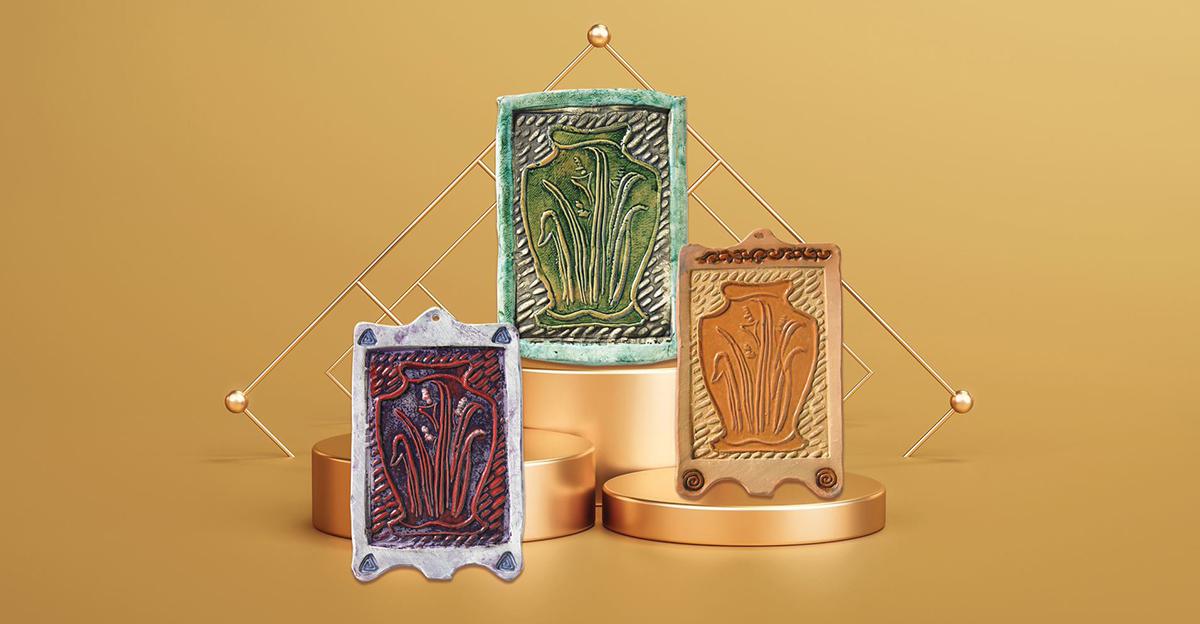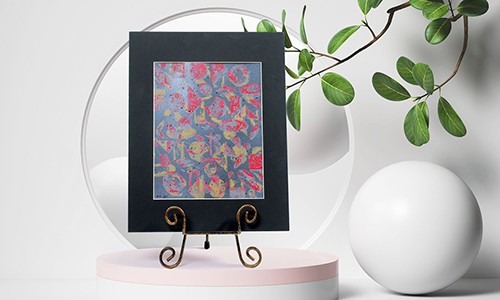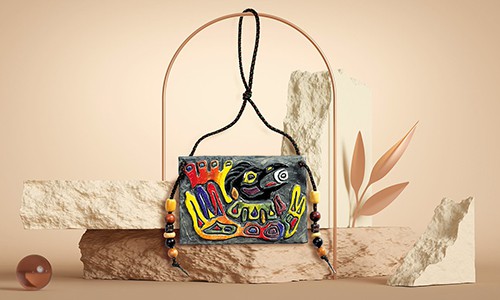Throwback to the good old days of the Arts and Crafts movement with our Impressed Tile Relief art lesson plan! Combining printmaking and ceramics, this lesson walks students through making a clay tile with the impression of a decorated pot and decorative frame.
Arts and Crafts Movement History
With the rise of the Industrial Revolution came the ability to mass-produce everything from furniture to home décor. Although more readily available and less expensive, these items were, by definition, all exactly the same and not always produced with the highest quality standards. The artists of the time, who cherished individual expression and beauty above all, revolted in the form of an artistic movement called the Arts and Crafts movement.
The movement began in England and moved to America around the turn of the 20th century. Artists in this movement began to make high-quality jewelry, furniture, stained glass, ceramics, and other decorative items with an intentionally handmade look. This meant clean, natural lines and a lack of excessive ornamentation.
William Morris, a key player in the movement, is best known for the natural designs on the fabrics and wallpapers he produced, including his African Marigold textile design.
Impressed Tile Relief: Art Lesson Plan
First, students will plan and carve a linoleum printing block they will press into their clay. Then, they’ll press their clay tiles and design custom borders with simple clay shapes and textures. Additional stampings of their blocks will result in tiles with identical prints but unique glaze colors, textures, and decorative frames. This series of obviously handmade pieces will proudly represent the style of the Arts and Crafts movement.
Follow the link below for step-by-step directions, a materials list, and an image of the finished piece. Suitable for grades 7-12.
View the Impressed Tile Relief Art Lesson Plan









Leave a Reply